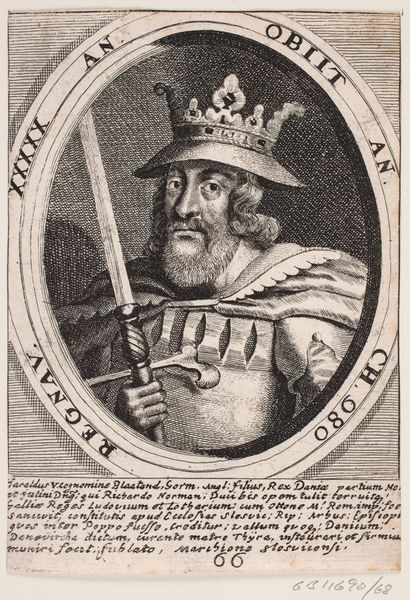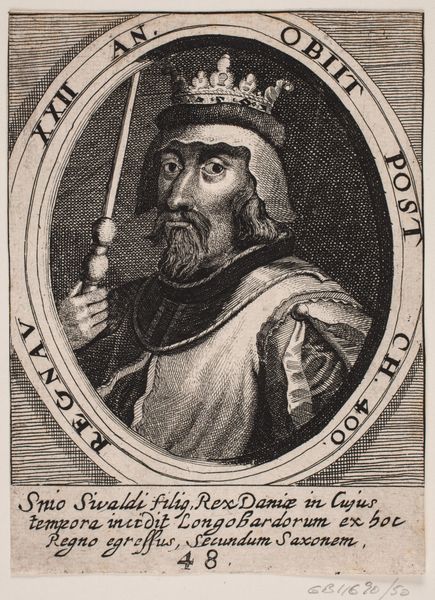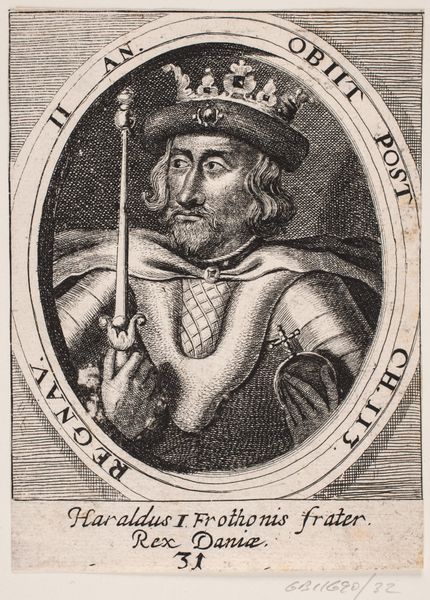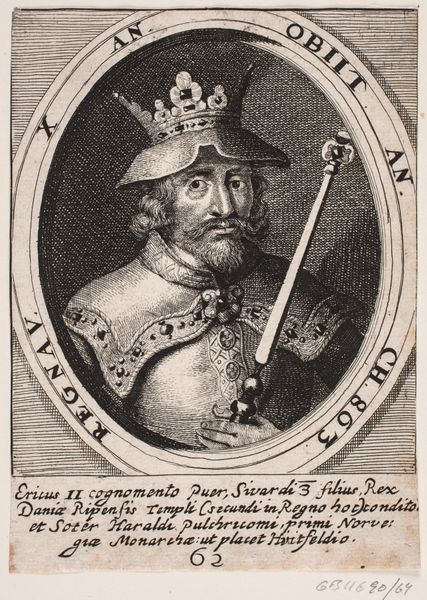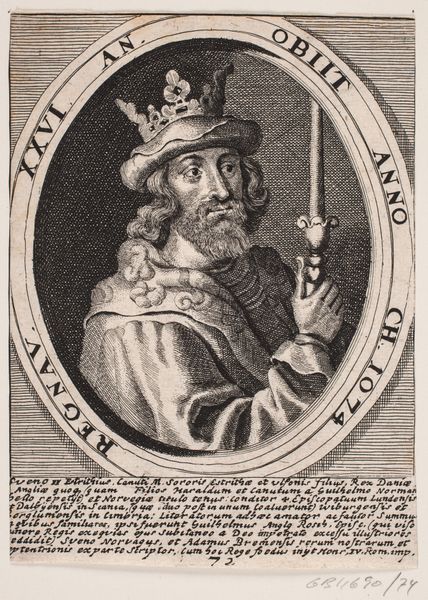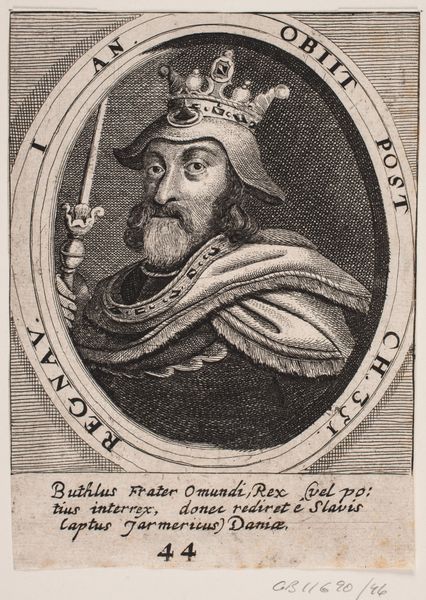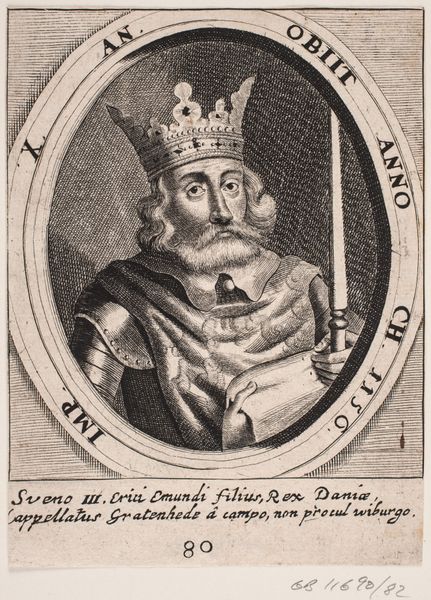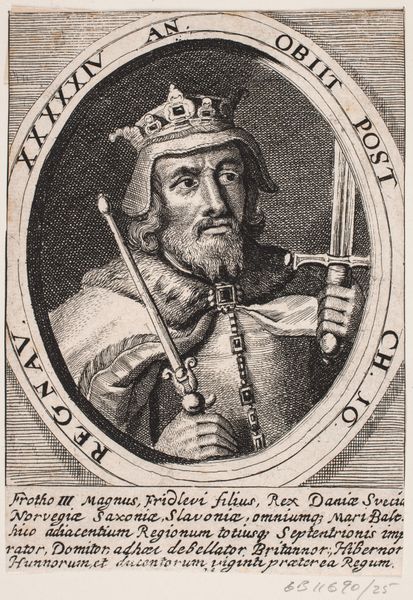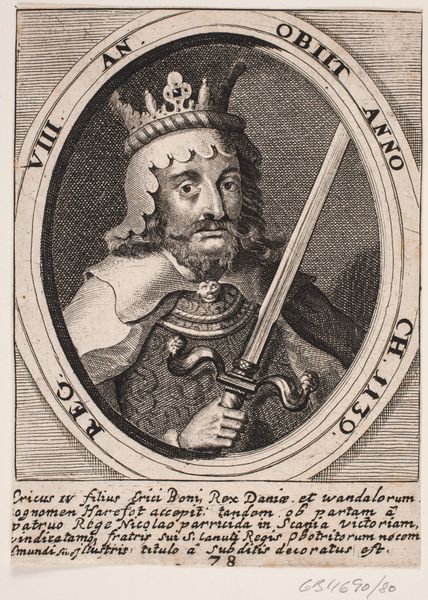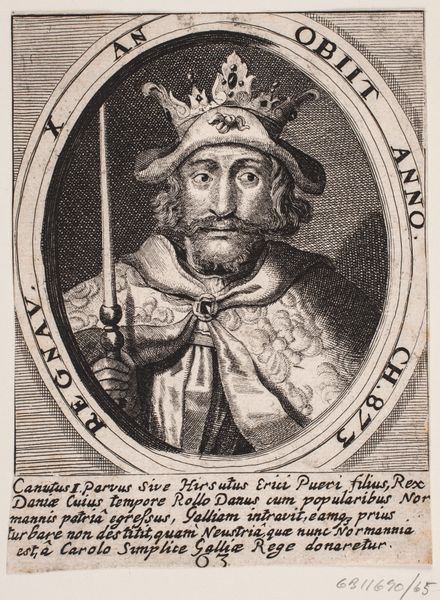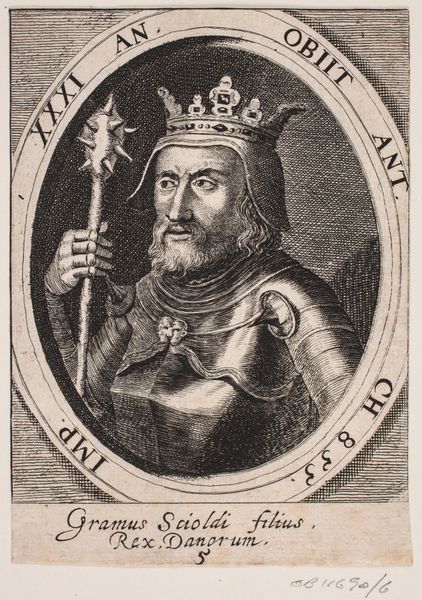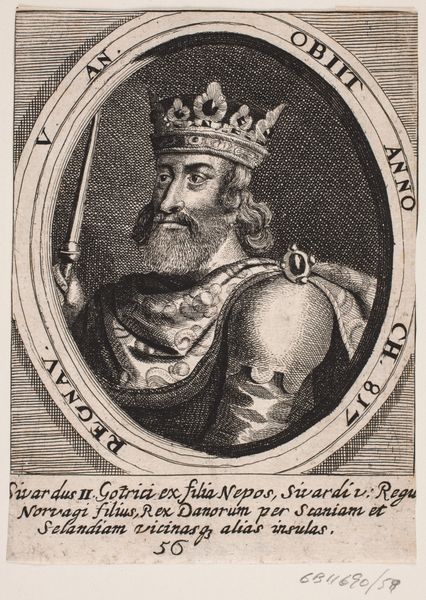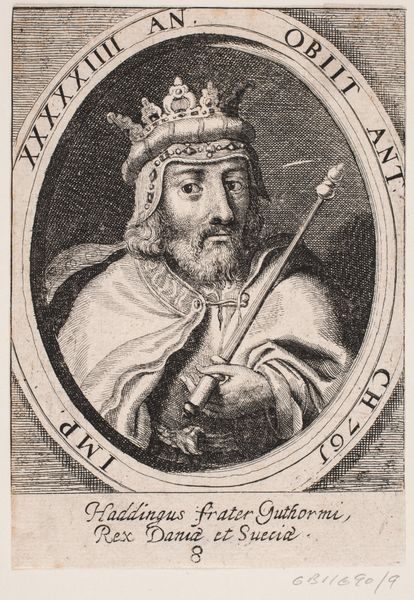
print, engraving
#
portrait
#
medieval
# print
#
caricature
#
history-painting
#
engraving
Dimensions: 140 mm (height) x 100 mm (width) (bladmaal)
Curator: This engraving, titled "Erik Ejegod," was created in 1646 and is currently housed in the SMK, the National Gallery of Denmark. Editor: It’s quite striking, even in its small scale. There's a formal stiffness, typical for a portrait, but his gaze holds a surprising intensity. It definitely makes you curious about the character it portrays. Curator: Indeed. Considering its production during the 17th century, we can understand that the depiction of King Eric I, who ruled Denmark from 1095 to 1103, aims at picturing royalty and Danish national history, though it certainly is not a contemporaneous representation. The print medium itself reflects the increasing accessibility of historical imagery and narratives. Editor: Right. And that accessibility plays a huge role in shaping how national identity is constructed. We're not just seeing a king, but a carefully curated image of power meant to resonate with a broad audience. His regal attire, complete with a bejeweled crown and an elaborately designed collar, screams authority, yet I can't help but wonder whose interests were truly being served by circulating images like this so long after Erik's death. Curator: Good point. The Latin text inscribed below the image praises Eric I for making people from Wendland tributaries and details his passing on his way to Constantinople. This suggests the engraving serves to enhance a historical, idealized version of Denmark that reinforces specific notions of sovereignty, legacy, and its sphere of political control. Editor: I wonder too about the seemingly innocuous orb he holds in his hand, and his peculiar soft cap below the jeweled crown. Are those culturally or historically accurate signifiers? I'd want to know more about who commissioned this image, what kind of agenda they had. Curator: Investigating that context, like where such prints would have circulated and been displayed, helps reveal their original purpose and the cultural narratives being promoted. The symbolic meanings are complex and depend on the socio-political conditions for their resonance. Editor: Exactly! Looking beyond the immediate aesthetics of the artwork to see it as a historical artifact is a lens that makes examining this engraving all the more powerful. I can appreciate it as not just a picture but as a symbol and agent of something bigger, more profound.
Comments
No comments
Be the first to comment and join the conversation on the ultimate creative platform.

